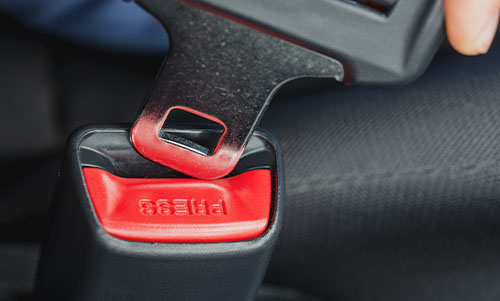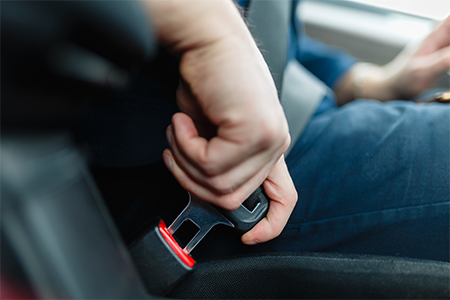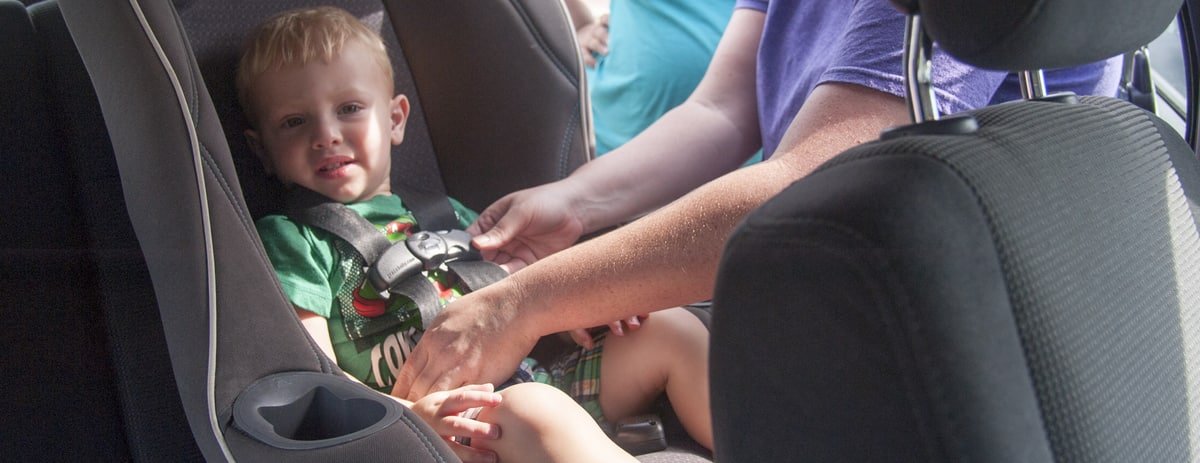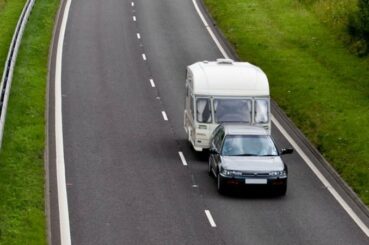Everything To Know About Seat Belts

Seatbelts are more than just a simple strap across your lap. They are a vital piece of safety equipment that has demonstrably saved countless lives on the roads.
But how much do you know about their history, the laws surrounding them, and how to use them effectively? This blog will answer all your questions about seatbelts in the UK, ensuring you’re buckled up for a safe journey.
Seat Belt History and Laws
The concept of a seatbelt can be traced back surprisingly far, with the first patent for a restraining device in a carriage filed in 1885. However, it wasn’t until the mid-20th century, as car speeds and accident rates increased, that seatbelts began to gain traction.
The UK, along with many other countries, saw a turning point in the 1960s. While initially only mandatory for front seat occupants from 1970, growing awareness of their lifesaving potential led to a crucial change in 1983. This law made wearing a seatbelt compulsory for all occupants over 14 years old, significantly boosting road safety across the nation.
Today, this law extends to all seats fitted with seatbelts, with very few exceptions.
Consequences of Not Wearing a Seat Belt
The consequences of not wearing a seatbelt are far more severe than simply facing a fine. While a fixed penalty notice of up to £500 can be issued by the police if you’re caught unbuckled, the true cost can be much higher.
In the unfortunate event of an accident, not wearing a seatbelt dramatically increases your risk of serious injury or even death. During a collision, the sudden impact can send you flying from your seat, potentially hitting hard surfaces inside the car or being ejected entirely.
Seatbelts work by restraining you in your seat, absorbing some of the impact forces and keeping you safely positioned within the vehicle. It’s a simple action that can make all the difference.
REMEMBER: The driver of the vehicle is responsible for making sure all children passengers are wearing a seat belt or are in the correct car seat/booster seat for their age/height. Failure to comply can result in the driver being issued a fine as outlined above.
Seat Belt Safety
Seatbelts are incredibly effective safety devices, but only if used correctly. To ensure maximum protection in the event of an accident, it’s crucial to wear your seatbelt in the proper way. Here are some key points to remember:
- Positioning: The lap belt portion of the seatbelt should sit low and tight across your hips, not resting on your stomach where it could cause internal injuries. The shoulder belt should lie snugly across your chest, not slipping off your shoulder or resting on your neck.
- Adjustment: Modern seatbelts are typically self-adjusting, but it’s always a good idea to double-check. Ensure the belt sits comfortably but firmly against your body, without any slack that could allow you to move excessively during an impact.
- Avoidance of twists: The webbing of the seatbelt should lie flat against your body. Any twists or folds in the material can compromise its effectiveness in a collision.
By following these simple guidelines, you can maximise the safety benefit your seatbelt provides.

Child Seats and Seat Belt Covers
When it comes to protecting our most vulnerable passengers, child safety becomes paramount. For children under 12 years old or those less than 135cm tall, the law in the UK mandates the use of a properly fitted child seat. These specialised seats are designed to provide best support and restraint for young bodies in case of an accident. They distribute crash forces more evenly and ensure proper seatbelt positioning for maximum protection.
It’s important to choose the right child seat for your child’s age, size, and weight. There are different types of child seats available, from infant carriers to booster seats for older children. Consulting a qualified professional or referring to manufacturer guidelines can help ensure you select the most appropriate seat for your child’s needs.
While some people might consider using seat belt covers for comfort purposes, these are generally not recommended. Seat belt covers can interfere with the proper functioning of the seatbelt by adding unwanted padding or bulk. This can prevent the belt from lying flat against your body and absorbing impact forces effectively. In some cases, the cover material itself could even break under pressure during a collision.
For comfort, it’s best to choose a seatbelt with a smooth, comfortable texture. Additionally, some car manufacturers offer adjustable shoulder belt pads for added comfort.
FAQs:
Do police officers need to wear seatbelts?
Yes, even law enforcement officials prioritise safety. Police officers are required to wear seatbelts while on duty unless there’s a specific operational reason why they can’t. This could include situations where they need to move freely within the vehicle to apprehend a suspect or respond to a dynamic event.
Do firefighters and ambulance drivers need to wear seatbelts?
Similar to police officers, emergency service personnel understand the importance of setting a good example and prioritising their own safety. Firefighters and ambulance drivers must wear seatbelts while driving, except in exceptional circumstances where their immediate response duties might need otherwise.
Coach seat belt law (including buses, trains and other public transport):
Seatbelts are not mandatory on all forms of public transport in the UK. However, there are some key distinctions to be aware of. For coaches and minibuses registered after 2001, seatbelts are mandatory for all passengers. This is because these vehicles are often used for longer journeys and may travel at higher speeds. On the other hand, there is currently no legal requirement for seatbelts on trains, trams, or other forms of public transport like underground systems.
Taxi passenger seat belt law:
Fortunately, the seatbelt law extends to passengers in taxis as well. As long as a seatbelt is fitted in the taxi, passengers are required by law to wear it. The responsibility for ensuring they’re buckled up falls on the individual passenger, not the taxi driver.
Dog seat belt law:
While there’s no specific law requiring dogs to wear seatbelts in the UK, it’s highly recommended to take steps to keep your furry friend safe during car journeys. An unsecured dog can become a dangerous projectile in the event of a collision, potentially injuring themselves or other occupants in the vehicle. Thankfully, there are safe and secure alternatives available. Consider using a pet harness or carrier specifically designed for car travel. These restraints keep your dog securely positioned and prevent them from being thrown around the car.
For more detailed information on safe dog transportation, you can refer to this resource: How To Drive Safely with Your Pet
By making smart choices and using the safety features available, we can all ensure a safer journey for ourselves and our loved ones on the road. Remember, buckling up is a simple yet critical step towards a safer tomorrow.

Some Interesting UK Seat Belt Facts
- The Road Safety Observatory states that the introduction of the seat belt law saved the lives of 241 drivers and 147 front passengers in 1983.
- Drivers between the ages of 17-34 who’ve been legally required to wear seat belts virtually their entire lives have been found to have the lowest seat belt wearing rates.
- Evidence suggests people are less likely to use a seat belt when travelling on a short or familiar journey. However, seat belts should always be worn regardless of journey length.
- European studies have found that seat belt wearing rates were 97.5% in vehicles fitted with seat belt reminder systems and 85.5% in vehicles without.
- The Road Safety Authority conducted a survey in 20 and found that 26% of 17-34-year-old women admitted to wearing their seat belt the wrong way (under their arms rather than on their shoulders). Reasons for this ranged from relieving neck tension, improving general comfort, protecting their clothing and even protecting their fake tan. Remember nothing is worth more than your life so you should always wear your belt correctly.
Need some help finding a car that’s fit for your family? Contact us today and we can guide you through all the cars that meet the seat belt law with the appropriate ISOFIX fittings for your growing family!
Blog Comments
To view, comment or reply to comments you must be logged into facebook



